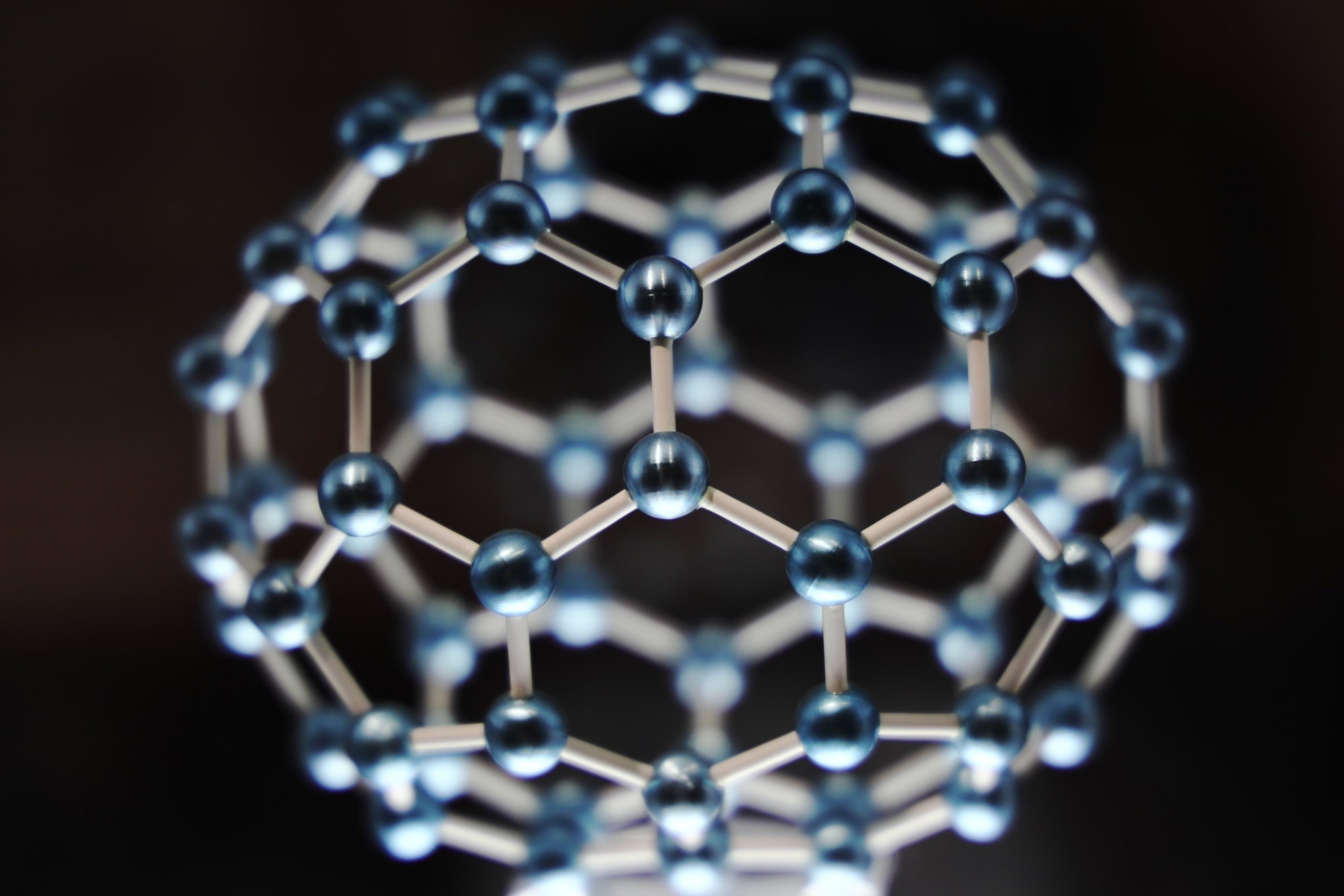Researchers have demonstrated that C60 fullerene can serve as an efficient and selective catalyst for CO2 electroreduction, offering a scalable pathway for converting carbon emissions into renewable fuels.

Image Credit: bib ashley/Flickr.com
Challenges in CO2 Electroreduction
Electrochemically converting carbon dioxide into value-added chemicals, such as carbon monoxide for producing synthetic fuels, is a challenge the research sector continues to tackle. However, many conventional metal-based catalysts used for CO2 reduction struggle with low selectivity and suffer from competition with the hydrogen evolution reaction (HER), reducing their overall efficiency.
To overcome these limitations, researchers have been exploring carbon-based alternatives such as fullerenes. Among them, C60, a cage-like molecule with a delocalized π-electron system, shows significant potential with its unique ability to act as both an electron reservoir and an active catalytic site.
Evaluating C60’s Catalytic Capabilities
In a recent study published in Angewandte Chemie, researchers investigated the performance of C60-based catalysts using both experimental and computational methods.
The team synthesized a C60–Cu/SiO2 catalyst and evaluated its Faradaic efficiency, selectivity, and long-term stability under various electrochemical conditions, including an applied potential of -1.1 V versus the reversible hydrogen electrode.
The study also included a comprehensive meta-analysis of over 2,500 previous reports on C60-metal interactions, with a particular focus on copper. Experimental tests assessed the influence of electric fields and pH on catalytic performance, while density functional theory (DFT) simulations revealed how C60 contributes to reaction pathways at the atomic level.
Advanced imaging techniques, such as scanning electron microscopy (SEM) and transmission electron microscopy (TEM), were used to characterize the catalyst’s morphology and ensure uniform dispersion of active sites.
Boosting Efficiency and Selectivity
The results were promising. The C60–Cu/SiO2 catalyst achieved a Faradaic efficiency of approximately 85.5 % for CO production, which significantly outperforms traditional catalysts by suppressing the formation of undesired byproducts such as methane and ethene.
The researchers linked this improvement to C60’s structural features, which enable strong adsorption and stabilization of COOH* intermediates. The molecule essentially enhances selectivity by guiding the reaction pathway toward CO production.
The study also developed a pH-dependent microkinetic model, revealing an optimal pH of around nine for maximizing CO production. C60's curved surface was particularly effective at promoting intermediate adsorption and facilitating charge transfer under alkaline conditions and applied electric fields.
A Stable Catalyst for Clean Energy Applications
Beyond its performance, C60 demonstrated impressive stability under extended operational conditions. The catalyst resisted deactivation and avoided poisoning of its active sites, confirming its potential for long-term use in industrial or grid-scale CO2 reduction systems.
Crucially, the findings suggest that C60 acts not only as an active site but also as an electronic modulator. This dual functionality, combined with its molecular curvature, enhances the efficiency and selectivity of CO2 electroreduction.
Download your PDF now!
Toward Scalable, Sustainable CO2 Conversion
These results underscore the promise of C60-based catalysts in renewable energy systems, particularly for converting captured CO2 into fuels or feedstocks. The study paves the way for further exploration of nanocarbon materials in sustainable chemistry, with potential applications extending to hydrogen production, nitrogen fixation, and other electrochemical processes.
Future directions could include combining C60 with materials such as graphene or metal-organic frameworks to create hybrid systems with even greater catalytic performance. Such developments would support the move toward a circular carbon economy while reducing dependence on fossil fuels.
Conclusion
This research establishes C60 fullerene as a powerful component in CO2 electroreduction. With its ability to stabilize intermediates, function as a redox-active site, and remain stable under operating conditions, C60 demonstrates strong potential in advanced catalyst design. The study also exhibited a robust pH-field microkinetic model, offering researchers a valuable tool for optimizing electrocatalytic systems.
Taken together, these findings could help mitigate climate change and support clean energy infrastructure.
Journal Reference
Ying, S, W. et al. (2025). C60 Fullerene as the Active Site for CO2 Electroreduction. Angewandte Chemie, e202511924. DOI: 10.1002/ange.202511924, https://onlinelibrary.wiley.com/doi/10.1002/ange.202511924
Disclaimer: The views expressed here are those of the author expressed in their private capacity and do not necessarily represent the views of AZoM.com Limited T/A AZoNetwork the owner and operator of this website. This disclaimer forms part of the Terms and conditions of use of this website.